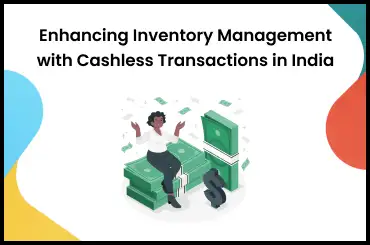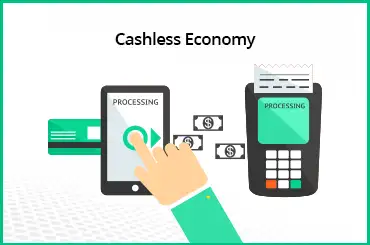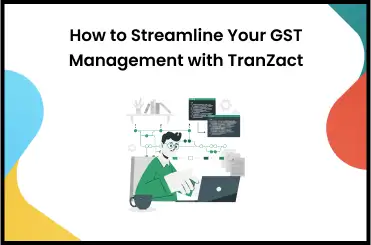GST registration is not only a legal requirement for businesses meeting the specified turnover threshold, but it also helps them to claim input tax credit. After GST, all the indirect taxes levied on goods and services by the state or central government have been consolidated into one tax i.e. Goods and Services Tax (GST).
The following entities and individuals must apply for GST registration:
- Goods business with a minimum turnover of 40 lakhs.
- Service business with a 20 lakh turnover.
- E-commerce operators and anyone selling products via an e-commerce operator.
- Agent who supplies goods.
- Those involved in the interstate supply of goods.
- Input service distributor (office of the supplier of goods or services).
- Non-resident suppliers who come under the tax slab.
Read this informative blog to know more about GST documents, GST threshold limit, compulsory GST registration, voluntary GST registration, and how to cancel GST registration and enable GST registration offline.
Benefits of GST Registration
For a company to start a new business, previously it needed to have VAT registration. Since all the states had different tax systems and different rates, it was difficult for startups to follow the various legal procedures.
GST has centralized the whole process and has helped startups expand their business in different states easily. We have listed the important benefits of GST registration in the following section:
-
Better control on tax collection: With input tax credit across stages, the system of GST is such that traders who comply with it get an incentive tax.
-
Simplified compliance: With everything from registration to payments and filing returns online, GST compliance has become quite hassle-free. It is commonly known as a business-friendly tax.
-
Boost to the manufacturing sector and exports: With this one tax, the cost of local goods has come down. Indian goods have gained attention in the international market thus giving leverage to Indian exports.
-
Improved logistics and shipping - The flow of goods across the state border has now improved as there is no octroi, or Central Sales Tax (CST). With GST, the nation has become a single market allowing the free flow of goods, which has eventually improved the efficiency of logistics and shipping in India and has helped e-commerce businesses grow.
-
GST composition scheme a boon for startups: With the GST composition scheme, startups, restaurants, and small businesses with up to 20 to 50 lakhs in sales need to pay less tax. This comes as a great relief for them.
II. Eligibility for GST Registration
-
GST Registration Threshold: The requirement for GST registration in India varies based on business type and location.
-
In most states, businesses must register for GST if their annual turnover exceeds Rs. 40 lakhs (for goods) or Rs. 20 lakhs (for services).
-
Mandatory Registration: All businesses with an annual turnover exceeding Rs. 40 lakhs must register for GST. However, the threshold is Rs. 20 lakhs for eastern states, Himachal Pradesh, and Uttarakhand.
-
Voluntary Registration Under GST: Individuals can also voluntarily apply for GST registration even when they don't come under the taxation slab. This happens mostly when they need to give GST invoices to customers. However, they are not liable for the same under section 22 or section 24 of the CGST Act, 2017, or SGST/UTGST Act, 2017.
III. Documents Required for GST Registration
GST registration process and documentation are almost similar across the nation. However, document requirements differ based on which GST registration category you belong to. They are enlisted below:
- Sole proprietorship-
If you are looking to register a sole proprietorship, then you would need the following documentation:
- PAN card and ID proof
- A canceled cheque
- You would also need to adhere to the provisions mentioned in the form.
Additional official documents-
- Copy of utility bills like electricity bills, water bills, or phone bills
- Rent Agreement
- No Objection Certificate
- Private Limited Company or Public Limited Company-
For the GST registration of a Private Limited or Public Limited Company, you need to submit the following documents:
- PAN Card of the company
- Registration certificate of the company
- Memorandum of Agreement and Association of Agreement
- A copy of the Bank Statement
- A copy of the Board resolution
In addition to the above-mentioned documents, one also needs to submit the ID proof of the directors of the company. The validating documents that one needs to submit are:
- PAN card of directors
- ID proof of directors
Registered Office documents
- Utility bills which include water bills, electricity bills, or landline bills
- Rent Agreement
- No Objection Certificate
- Documents for normal partnership firm- In the case of a partnership firm, you would be required to submit the following documents:
- Partnership documents
- PAN card of partnership
- Partnership deed
- Copy of bank documents
Documents related to partners-
In addition to the documents mentioned above, you also need to submit the PAN card of the partners of the firm.
Registered office documents-
Similar to Private and Public Limited Company, one also need to submit utility bills and rent agreement. The documents are :
- Copy of utility bills like water bills, electricity bills, or landline bill
- Rent Agreement
The process of GST registration is now simplified. Once you have all the documents, you can complete the registration process online as discussed below in the next section. If you are unsure about the same, then it's advisable to hire the services of a professional dealing with GST registration.
IV. Step-by-Step Process for GST Registration
- Online GST Registration Process
Given below is the step-by-step procedure for GST Registration online.
- To begin with, you need to visit the GST portal by clicking on https://www.gst.gov.in/.
- Then follow Service>Registration>New Registration.
- You will get the application form as Part A and Part B.
Steps for PART A of the form
- Choose the New Registration Option. Here you will get the option I AM. Now you need to choose a Category, Taxpayer, and select the District for which you need the registration form.
- Thereafter, fill Business Name as mentioned on the PAN card. Choose the State and then select the district.
- Now you need to enter your Email ID and mobile number. Remember that this must be in use as all communication will be done on this Email ID and number.
- Following this, you need to type characters, as shown in the image field. And then click on the Proceed button.
- After this, you will receive the OTP on your mobile number. This OTP is valid for 10 minutes.
- Once you have filled in the OTP, you will get a TRN or Temporary Reference Number. It will reflect on your screen.
Steps for PART B of the form Once you have successfully completed Part A of the form, you need to move to Part B. 10. Use the TRN to log in again and enter the Captcha. 11. You will find My Saved Application. Here you need to select Action Column and choose the Edit Icon. 12. You will see a registration form with different tabs. 13. You will see the 10 tabs. You need to fill each of these 10 tabs by clicking on them individually. These include your business details, details of authorized signatory, partners, place of business, bank accounts, state-specific information, verification, approved representative, additional place of business, and other details. 14. Now enter commodity details, save, and continue. ( if you don't know the HSN code, then you can search the HSN Chapter by Name or Code, and you will get the Chapter list in front of you. You can select the desired code and enter the same) 15. Once you have entered the details of the Bank and verified everything, you can submit the form. 16. You would need Digital Signature Certificates (DSC) or a digital signature for this. It is mandatory for Limited Liability Companies. You would need to use DSC to log in after filling out the enrollment application. 17. Now click on the Proceed button. After this, you need to update information and documents. You would also need to sign from the pop-up window. Make sure your DSC is uploaded on the computer. 18. Once you have successfully completed the application, you will get an acknowledgment within 15 minutes on your email ID and mobile number. You will also get the Application Reference Number (ARN) of your mobile and email ID.
Note: Your GST application will take 15 days to process. You can check your GST application status from the official GST Portal.
- Offline GST Registration Process
- One can visit the GST Seva Kendra for offline GST registration.
- Next, fill in the GST form, and submit it at the GST Seva Kendra along with the necessary documents.
- Common Mistakes to Avoid During GST Registration
Here are common mistakes to avoid when registering for GST:
Incorrect Information:
Mistakes in the business name, address, contact information, or PAN can lead to delays or complications.
Missed Deadlines:
Register for GST within the prescribed timeline based on your turnover or business type. Failing to register on time may result in penalties and legal consequences.
Choosing Incorrect Registration Type:
Choosing the wrong registration type based on your business structure can lead to compliance issues and unnecessary complications.
Inadequate Document Submission:
Failure to provide necessary documents as per the GST registration guidelines or incomplete submission can lead to registration rejection or delays.
Ignoring State-Specific Requirements:
Understand the state-specific rules and thresholds for GST registration, especially for businesses operating in multiple states. Compliance requirements may vary, and it's crucial to adhere to the specific regulations of each state.
Non-Compliance with GST Regulations:
Failure to comply with invoicing guidelines, tax rate determination, record-keeping, or filing of returns can result in penalties and legal implications.
Lack of Professional Assistance:
Seek professional guidance, such as from tax consultants or experts, to navigate the complexities of GST registration. They can provide valuable insights, help avoid errors, and ensure a smooth registration process.
V. GST Registration Fees for Different Types of Businesses
There are no GST registration fees by the government for completing GST registration on your own on the GST portal. If you have hired any company to do GST registration on your behalf, you may have to pay their fees. Also, if you leave the GST registration process incomplete, you will need to pay 10% of the due GST amount or Rs. 10,000.
VI. GST Compliance and TranZact
GST registration has become mandatory for all individuals and businesses who come under the tax bracket. In this blog, we have covered important information from the GST registration process to eligibility, documents needed, and mistakes that one must avoid during GST registration. Complying with the GST ensures you have a flawless invoicing system and prevents penalties.
TranZact is among the top GST billing and invoice software used by small and medium-scale businesses. Manual GST filing can go wrong resulting in penalties. You can try TranZact's ERP and invoicing solutions. It will help you not just with GST billing, invoicing, and documentation but also with inventory management, production planning, and resource planning. It also offers Tally and BUSY integration for simplified accounting and documentation processes.
FAQs on GST Regirstration Process
1. How long does it take to get GST registration?
Once you have submitted all the necessary documents on the portal, it takes about 15 days working days for the GST registration. This timeline may vary based on the verification, authentication, and validation of documents submitted by the client. Hence, for faster processing, it is important that you must submit the right and verified documents.
2. Can GST registration be canceled?
GST registration can be withdrawn or canceled by the applicant as long as no action has been taken by the authorized tax officer in response to the registration application.
3. Is GST registration mandatory for small businesses?
Yes, GST registration is mandatory for small businesses. Small business GST registration is all the more necessary if your turnover is over 20 or 40 lakhs depending on the state and business category.
4. Is it possible to transfer the GST registration from one person to another?
No, it is not possible to transfer the GST from one person to another. In case there is a change of ownership, then the person needs to apply for a new GST registration.
5. What is the penalty associated with defaulting GST payment?
Complying with the GST regulation is mandatory for every organization. A company that fails to do so is liable to pay a penalty of 10% of the tax amount or a minimum of up to ₹ 10,000. However, if the case is of deliberate tax evasion, then 100% of the tax amount needs to be paid as a penalty.
6. Is there any offline method for GST registration?
Yes, one can visit the GST Seva Kendra near them to get the form for GST registration. Make sure to keep the Aadhaar card, PAN card, and other supporting documents handy when submitting the form for GST registration.
















